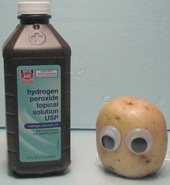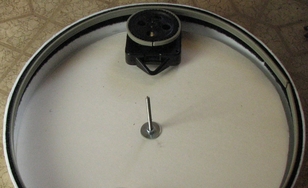
Carbonated beverages have been known for a very long time and the first ones were naturally occurring and had noticeable features. Carbon dioxide is slightly acidic and gives the beverage a slight tang, and it is a preservative as well. It can be seen to change the taste when the CO2 is gone, or the beverage has become flat. The taste is sweeter and not as enjoyable. Joseph Priestly was the first of many experimenters beginning in the 1770's who helped to give rise to a now mature product.
I was curious to determine how much CO2 a one liter bottle contained, so I weighed the contents with all of the CO2, and then heated the contents without the cap at a slow rate. After it was all free, I re-weighed the bottle and found that it was about 3.8 grams! That translates to about four times the volume of the one liter contents. That's a lot of CO2! This particular beverage was tonic water that also contains quinine. According to the manufacturers, they charge the CO2 at about 2 atmospheres, or a little less than 30 PSI (Pounds per square inch). And although I misspelled raisins in the title, the video is just for fun. It is also a two for the price of one. Enjoy and have some fun with science...




 RSS Feed
RSS Feed
